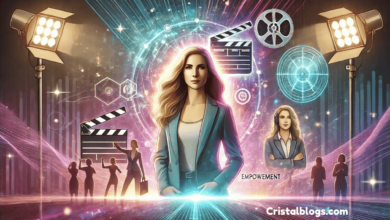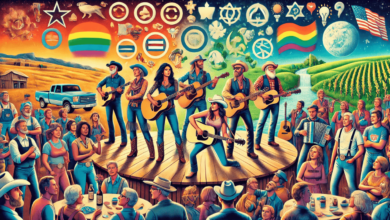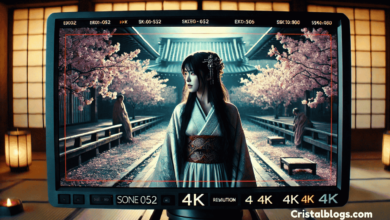AI Text to Music: The Future of Music Creation

In the ever-evolving global of synthetic intelligence (AI), the intersection of language and sound has birthed an thrilling new frontier: AI text-to-song generation. This innovation lets in users to convert written textual content, which include lyrics, descriptions, or emotions, into musical compositions. This improvement has the capability to revolutionize how track is created, democratize music manufacturing, and offer new methods for artists, composers, or even non-musicians to create music effects.
What is AI Text to Music?
AI textual content-to-tune refers to using artificial intelligence algorithms to generate tune from textual enter. Instead of conventional song composition strategies, which generally require understanding of tune principle and technical skills, AI Text to Music can examine the language, interpret the because of this at the back of terms, and convert them into melodies, harmonies, and rhythms. The end end result is a piece of song that corresponds to the tone, temper, or narrative conveyed by using the text.
How Does AI Text to Music Work?
AI text-to-track systems depend upon deep gaining knowledge of fashions, especially those skilled on large datasets of music and text. These fashions are designed to understand each the shape of language and the styles positioned in track.
Text Analysis: The first step includes parsing the enter text to understand its which means, sentiment, and context. For instance, if the text describes a scene of a wet day, the AI could interpret this as a peaceful, perhaps melancholic, surroundings.
Music Generation: After information the mood and context, the AI then starts offevolved to generate track that suits the textual content. This ought to involve choosing the precise style, pace, key, and instrumentation to mirror the emotional tone of the phrases.
Fine-Tuning: Some advanced systems even permit customers to tweak the generated song by adjusting parameters like fashion, duration, or the extent of complexity within the composition.
Applications of AI Text to Music
Music Composition for Creators: Musicians, composers, and songwriters can leverage AI text-to-song gear to streamline the composition approach. Instead of beginning from scratch, these equipment can function innovative partners, assisting to generate mind or provide concept at the same time as writer’s block hits.
Accessibility for Non-Musicians: One of the maximum interesting components of AI text-to-music is its ability to democratize tune creation. With these tools, even those with no formal track training can explicit their creativity and generate music primarily based on their mind and feelings.
Soundtracks and Background Scores: AI-generated track also can be used for developing custom soundtracks for movies, video video games, and commercials. By inputting descriptions of the favored ecosystem or narrative, filmmakers and game builders can quick generate tune that fits their assignment’s wishes.
Interactive Storytelling and Personalized Music: AI text-to-track structures open up possibilities for interactive reports, in which customers offer textual content and get maintain of music in actual-time. This need to create immersive, custom designed soundtracks for the whole lot from storytelling apps to stay performances.
AI as a Tool for Music Education: Educators can use AI text-to-tune structures as coaching gear to help students understand the connection amongst language, emotion, and track. It can also be used to introduce novices to the basics of composition without requiring complicated technical expertise.
Notable AI Text to Music Projects
OpenAI’s MuseNet and Jukedeck: OpenAI’s MuseNet is a effective AI version capable of generating multi-tool compositions in loads of genres, from classical to modern pop. While not in simple terms text-to-music, MuseNet is part of the broader motion in the direction of AI tune generation. Jukedeck, however, emerge as an earlier pioneer, imparting music advent tools where customers might also want to specify temper, pace, and style.
AIVA (Artificial Intelligence Virtual Artist): AIVA is an AI composer designed in particular for developing music, which include film rankings. By interpreting textual inputs about scenes or emotions, AIVA can produce musical compositions that align with the supposed temper.
Amper Music: Amper Music is any other platform that lets in users to generate royalty-free track through inputting parameters like mood, style, and tempo. While it doesn’t generally rely on textual content enter directly, it’s part of the larger fashion toward AI-assisted music introduction.
The Future of AI Text to Music
As AI era advances, the destiny of AI text-to-track appears pretty promising. These systems are possibly to come to be extra ultra-modern, imparting even extra accuracy in translating language into emotion and sound. With deeper integration of natural language processing (NLP) and music idea, AI need to produce compositions which can be indistinguishable from human-created song.
Additionally, as those tools become greater on hand and less expensive, we might also see an explosion of latest track and creativity, allowing numerous voices and ideas to enter the tune-making gadget.
However, the rise of AI-generated music moreover brings approximately essential questions spherical authorship and originality. While AI can be a tool for creativity, who owns the rights to the tune created thru an AI? This will possibly be a subject of ongoing speak because the technology keeps to growth.
Conclusion
AI text-to-song is an interesting and unexpectedly advancing field that has the capability to exchange how track is created, shared, and professional. Whether you’re a professional musician, a hobbyist, or a person who genuinely desires to concentrate their thoughts become sound, AI gives new procedures to engage with song. As AI continues to investigate and increase, it ensures to free up even more revolutionary processes to blend the worlds of language and tune, developing infinite opportunities for the future of song advent.



